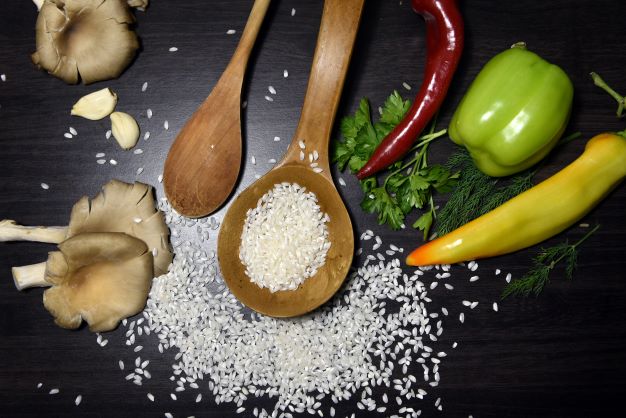European Rice: An exceptional source of Nutrition

Dubai, United Arab Emirates, January 2023:
Rice is a key ingredient of the nutrition for most part of the planet. From Greek Dolmas to Biryani in India, rice is the staple food for individuals all around. Studies suggest that rice is also an important source of livelihood for a fifth of the world’s population.
Steamed, boiled or fried, there are a multitude of ways to prepare it. Rice is also a primary source of energy for over half of the world’s people. In Mediterranean Europe, Rice found fertile soil and was grown, loved and became part of European culinary tradition since then. European rice is today distinguished for its quality and nutritional value.
The European Rice Market can be sub-divided in two different segments –
- INDICA RICE a long grain variety which represents around 25% of EU rice production
- JAPONICA RICE, a short/medium grain variety which is the “traditional” European rice and represents around 75% of EU rice production.
Why European Rice?
High-end quality and genuine taste are the characteristics of European Rice. Beginning from the field, producers select the seeds most suited to the soil and climate conditions of the area. During the cultivation they adhere to certified Integrated Management procedures aimed to the protection of the environment and the safety of the product. After harvesting, the product is transferred to the Rice Millers which implement a certified Quality and Food Safety System, for a better control of the quality procedure. The high-quality standards applied to the productive methods contribute to making a quality product, free from plant protection products and other heavy metals which are detrimental for human health.
Benefits of European Rice
European rice is a food with a high nutritional value. It is rich in B-complex vitamins, such as Niacin, Thiamine, Riboflavin and Selenium, while the carbohydrates contained in its endosperm constitute an important source of energy for the human organism. Modern scientific studies recommend that a total of 55% of our daily calorie intake must be in the form of carbohydrates. The nutritional value of rice is complemented by the proteins found in it, the contained metal micronutrients.
“Medium grain rice can be a great addition to any diet, offering a while foods source of carbohydrates for energy, with a medium ranking on the glycemic index so won’t cause too large a spike in blood sugar levels. There are some great nutrients in medium grain rice that are important for a vegan diet including iron and some protein. There are other nutrients such as B vitamins, potassium, phosphorus, magnesium and zinc. Those nutrients can be made even more bioavailable when soaked and sprouted/germinated, as phytic acid is killed off.
Rice is a great addition for people with gluten sensitivity or coeliac disease as it is gluten free. It can be used to provide complex carbohydrates without causing inflammation in the way gluten containing grains can,” said Victoria Tipper, UAE-based Nutritionist and Executive coach.
How Environmentally Friendly is European Rice?
European rice is a safe product since growing practices are based on environmentally friendly principles. Plant protection products used are approved by European Authorities, while fertilization is applied at the right time, using suitable products and state-of-the-art equipment.
How to Choose the Right Form?
Rice is a nutritious ingredient but choose your rice wisely! Not all rice is produced in line with best safety, quality, and sustainability practices. European rice surely is! You can simply opt for any Greek rice when grocery shopping.
Last Updated on 2 years by News Desk 2













